
Populous is a video game developed by Bullfrog Productions and published by Electronic Arts, released originally for the Amiga in 1989, and is regarded by many as the first god game. With over four million copies sold, Populous is one of the best-selling PC games of all time.
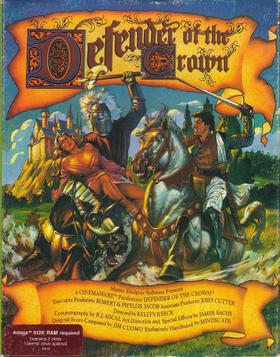
Defender of the Crown is a strategy video game designed by Kellyn Beck. It was Cinemaware's first game, and was originally released for the Commodore Amiga in 1986, setting a new standard for graphic quality in home computer games.
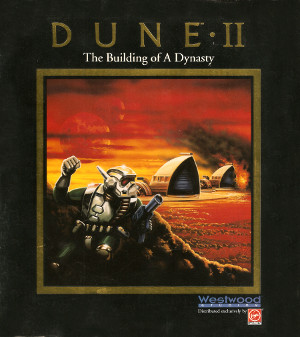
Dune II: The Building of a Dynasty is a real-time strategy Dune video game developed by Westwood Studios and released by Virgin Games in December 1992. It is based upon David Lynch's 1984 film Dune, an adaptation of Frank Herbert's science fiction novel of the same name.

Centurion: Defender of Rome is a turn-based strategy video game with real-time battle sequences, designed by Kellyn Beck and Bits of Magic and published by Electronic Arts. Originally released for MS-DOS in 1990, the game was later ported to the Amiga and the Sega Genesis in 1991. Centurion shares much of the concept and feel with Beck's earlier game Defender of the Crown (1987).

Battles of Napoleon is a 1988 computer wargame by Chuck Kroegel and David Landrey published by Strategic Simulations. It was released for the Apple II, Commodore 64, and DOS.

Bomberman is an action-maze video game originally developed and published by Hudson Soft for the PC Engine in Japan on 7 December 1990 and later in North America for the TurboGrafx-16 by NEC in 1991. Belonging to the Bomberman franchise, it is a re-imagining of the first game in the series starring White Bomberman on a quest to rescue Lisa, the kidnapped daughter of his inventor Dr. Mitsumori, from the castle of Black Bomberman while defeating evil monsters and villains that work for him. The game was later ported to home computers, each one featuring changes compared to the original version. Conversions for other platforms were in development but never released. The title garnered positive reception from critics since its initial release on the PC Engine/TurboGrafx-16 and later on home computers.

Waterloo is a battle strategy game by PSS for DOS, Atari ST, Amiga and Acorn Archimedes. It was released in the U.K. by Mirrorsoft in 1989 and in the U.S. by SSI in 1990.
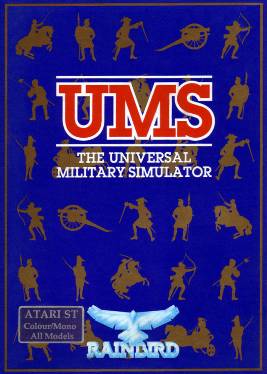
The Universal Military Simulator is a computer game developed by Rainbird Software in 1987 for the Macintosh, Tandy 4000, and IBM PC compatibles. In 1988, both Atari ST, Amiga versions were released. The game was created by Ezra Sidran. The PC and Amiga versions were ported by Ed Isenberg. The game spawned two sequels: UMS II: Nations at War and The War College: Universal Military Simulator 3.
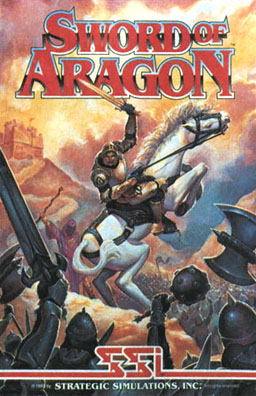
Sword of Aragon is a turn-based strategy and role-playing game developed and published by Strategic Simulations in 1989. It is also considered to be of the 4X genre. Set in the fictional land of Aragon, the games casts its protagonist as the duke of a city named Aladda. After assuming rule over the city and avenging his father's death, the protagonist embarks on a quest to unify the land through conquest. Accomplishing this goal entails developing cities, recruiting armies, and directing the troops on the fields of battle to victory. First published for MS-DOS, the game was ported to Amiga machines. Reception towards Sword of Aragon tended to be more positive than negative; reviewers called it an exciting game, but criticized its method of copy protection and cited problems with its documentation. There were also opinions that the game was more of a niche product, catering to hardcore strategists.

Warlords is a computer wargame released in 1990 for the Amiga and MS-DOS compatible operating systems, then in 1992 for Macintosh. It was designed by Steve Fawkner and developed by Strategic Studies Group. Warlords was followed by three sequels and several spinoffs. The game was based on designer Steve Fawker's Dungeons and Dragons campaign.

Battle Master is a 1990 fantasy action adventure game designed by Mike Simpson and Simon Jones for PSS and distributed by Mirrorsoft. The game is a fantasy adventure in which the player controls a champion who must battle evil forces to conquer four kingdoms, uniting the four kings' crowns and presenting them to the Watcher in order to restore the world to peace.
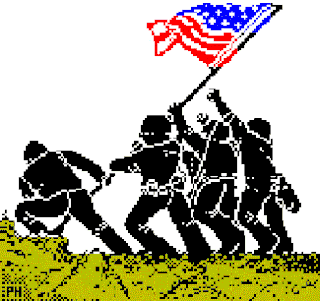
Iwo Jima is a turn-based strategy video game developed and published by Personal Software Services for the Commodore 64 and ZX Spectrum in 1986. It is the second instalment to the Strategic Wargames series. The game is set during the Battle of Iwo Jima in the Pacific Ocean theatre of World War II and revolves around the United States Marine Corps' objective to secure the island of Iwo Jima from the Imperial Japanese Army.
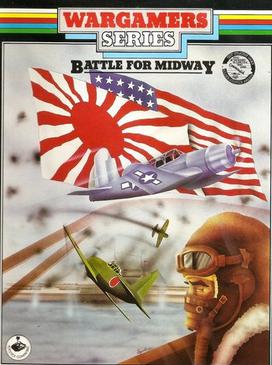
Battle for Midway is a turn-based strategy video game developed and published by Personal Software Services. It was first released in the United Kingdom and France for the MSX in 1984, and was re-released for the Amstrad CPC, Commodore 64 and ZX Spectrum in 1985. It is the second instalment of the Wargamers series. The game is set during the Battle of Midway in the Pacific Ocean theatre of World War II and revolves around the United States Navy attacking a large Imperial Japanese fleet stationed at Midway Atoll, in retaliation for the attack on Pearl Harbor.

Champion of the Raj is a turn-based strategy video game developed by Level 9 Computing and published by Personal Software Services. It was released exclusively in the United Kingdom for the Amiga, Atari ST, and IBM PC compatibles in 1991. It is the thirteenth and final instalment in the Strategic Wargames series. The game revolves around European imperialism and colonialism in India. Six factions–British, French, Mogul, Sikhs, Gurkhas, and Marathas–fight to gain overall control of India.

P-47: The Phantom Fighter is a 1988 horizontally scrolling shooter arcade video game originally developed by NMK and published by Jaleco. Set during World War II, players control a Republic P-47 Thunderbolt fighter aircraft to face against the Nazis, who are occupying multiple countries around the world. Its gameplay involves destroying waves of enemies, picking up power-ups and new weapons, and destroying bosses. It ran on the Mega System 1 hardware.
La Bataille de la Moscowa is a board wargame published originally by Martial Enterprises in 1975, later republished by Game Designers Workshop in 1977, and by Clash of Arms in 2011.

The Battle of Borodino: Napoleon in Russia 1812 is a board wargame published by Simulations Publications Inc. (SPI) in 1972 that is a simulation of the Battle of Borodino during the French invasion of Russia in 1812.

Napoleon at Waterloo is a board wargame published by Simulations Publications Inc. (SPI) in 1971 that simulates the Battle of Waterloo. The game, which features simple rules, was designed as an introduction to board wargaming, and was given as a free gift with each subscription to SPI's Strategy & Tactics magazine.

Rorke's Drift is a strategy video game for Atari ST, Amiga and MS-DOS home computers, released in 1990. The game is a recreation of the Battle of Rorke's Drift during the 1879 Anglo-Zulu War. The player assumes command of the British garrison at the Rorke's Drift shortly before the arrival of the 4,000-strong attacking Zulu force. The post's 137 defenders are rendered as individual characters which the player must order to perform actions. The game is played in real time and lasts from 4.30pm on 22 January 1879 until 7am the following morning. The game received mixed reviews, with critics praising the graphics and criticising the slow pace and complicated orders system.
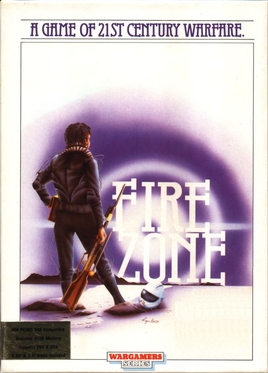
Firezone is a 1988 computer wargame developed by Arcadia and published by Personal Software Services (PSS) for the Amstrad CPC. It is part of PSS' Wargamers series. Ports for Commodore 64, Amiga, Atari ST, and MS-DOS were released later.




















